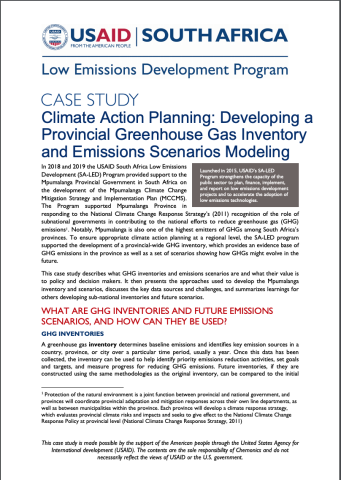
In 2018 and 2019 the USAID South Africa Low Emissions Development (SA-LED) Program provided support to the Mpumalanga Provincial Government in South Africa on the development of the Mpumalanga Climate Change Mitigation Strategy and Implementation Plan (MCCMS). The Program supported Mpumalanga Province in responding to the National Climate Change Response Strategy’s (2011) recognition of the role of subnational governments in contributing to the national efforts to reduce greenhouse gas (GHG) emissions. Notably, Mpumalanga is also one of the highest emitters of GHGs among South Africa’s provinces. To ensure appropriate climate action planning at a regional level, the SA-LED program supported the development of a provincial-wide GHG inventory, which provides an evidence base of GHG emissions in the province as well as a set of scenarios showing how GHGs might evolve in the future.
This case study describes what GHG inventories and emissions scenarios are and what their value is to policy and decision makers. It then presents the approaches used to develop the Mpumalanga inventory and scenarios, discusses the key data sources and challenges, and summarizes learnings for others developing sub-national inventories and future scenarios.


